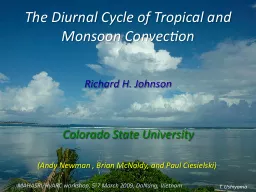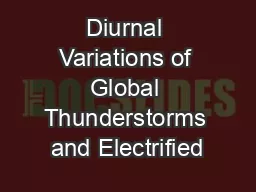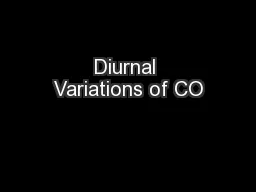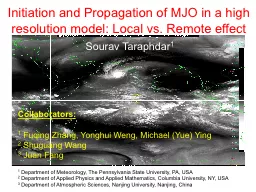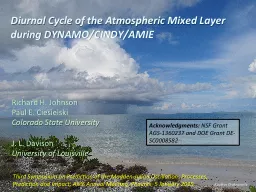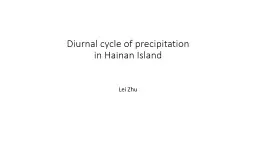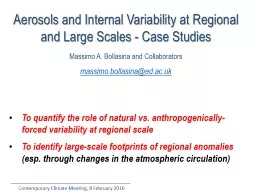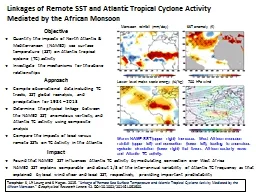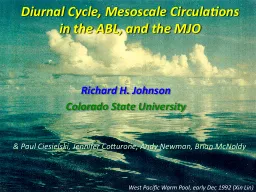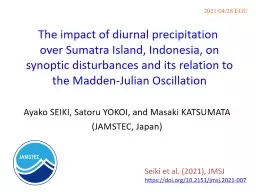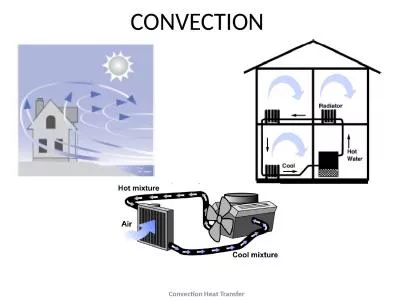PPT-The Diurnal Cycle of Tropical and Monsoon Convection
Author : min-jolicoeur | Published Date : 2017-07-31
Richard H Johnson Colorado State University T Ushiyama Andy Newman Brian McNoldy and Paul Ciesielski MAHASRI HyARC workshop 57 March 2009 DaNang Vietnam
Presentation Embed Code
Download Presentation
Download Presentation The PPT/PDF document "The Diurnal Cycle of Tropical and Monsoo..." is the property of its rightful owner. Permission is granted to download and print the materials on this website for personal, non-commercial use only, and to display it on your personal computer provided you do not modify the materials and that you retain all copyright notices contained in the materials. By downloading content from our website, you accept the terms of this agreement.
The Diurnal Cycle of Tropical and Monsoon Convection: Transcript
Download Rules Of Document
"The Diurnal Cycle of Tropical and Monsoon Convection"The content belongs to its owner. You may download and print it for personal use, without modification, and keep all copyright notices. By downloading, you agree to these terms.
Related Documents

